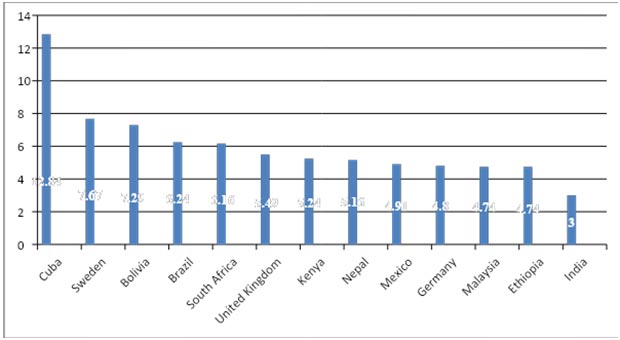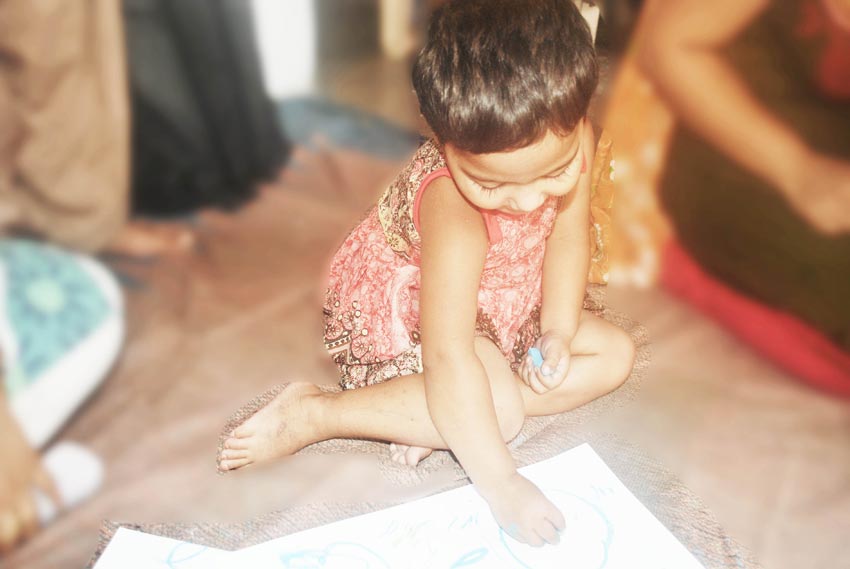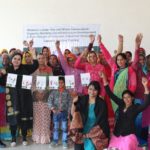The Sustainable Development Goals towards 2030 is a clarion call for guaranteeing equal and quality access of opportunities, addressing all relevant obstacles. The emphasis is on SDG 4, i.e., ‘ensure inclusive and equitable quality education and promote lifelong learning opportunities for all’ as quality education is the cornerstone of sustainable development.
The power of education is multi-pronged as it elevates lives of people by opening up new avenues of opportunities for sustainable livelihoods. Globally, countries have made steadfast improvements in providing access to education at all levels to their citizens. But the world still has ‘more knowledge than ever before, but not everyone can benefit from it.’
The discussion whirls around not just about access to school education but also tries to bring higher education in the larger scheme of things. While university spaces (should) breathe freedom and critical thinking, the threats in terms of lack of infrastructure and of hiked fees perpetrate pressures from all branches – family, society and dire systemic constraints, further building bulwarks between education and empowerment.
Education – A Right
We have embraced neo liberalism and find it bizarre if something doesn’t get converted into a system of transaction; it’s not letting the cat out of the bag situation, we already know that education is treated as a commodity, accessible to only those who can afford it; this promotes inequality to further get amalgamated with something which is a medium for annihilating it.
Education should be the other name for encouraging dialogues, debates and discussions, of coming together to develop critical and creative understanding; of bridging all the gaps, and of also unveiling, questioning and challenging status-quo.
In a country like India, where the spending on Research and Development (R&D) in terms of percentage of GDP has been stagnant at 0.6 to 0.7 per cent in the last two decades (Economic Survey of India), public institutions for higher education (ought to) provide a platform and draws out mechanisms to enable and bring to the surface the talented, but disadvantaged on the grounds of their social, economic and regional backgrounds.
Figure 1: Government Expenditure on Education as % of GDP


Source: UNESCO and Economic Survey 2018-2019 (India)
Research isn’t seen as either desirable or viable option, while public investment in public education, especially higher education and research, would contribute to actualise pen being mightier than the sword, and holistic advancement of the society. One can draw examples from the United States of America, where 3 million senior citizens in the US are still paying off their student loans. It shows that higher education isn’t viable for all – as students are in debt due to student loans with ramifications such as juggling between working and studying so as to earn enough to maintain basic standard of living as well as to pay off their student loans, which (can) affect a great deal on the quality of research.
Globally, economies are also not generating sufficient jobs for our highly quailed youth, like the pushing of Ad Hoc teachers in Delhi University to Guest lecturers, further creating an environment of uncertainty.
A large chunk of the society can’t bear the cost of higher education and/or of loans, but does it mean the education system will cater to only the monetarily privileged?
Gender and Education
The National Curriculum Framework (NCF), 2005 advocated that gender issues at schools need to be actively addressed and produced a position paper on gender issues which opens with “Gender is not a woman’s issue, it’s a people’s issue.”
Why should we bring up gender in education as well?
According to the statistics released by the latest census of 2011, India’s female literacy rate is 65.46 percent, which is significantly lower than the world average of 79.7 percent. Investments in schooling are often rationalized by their associated labour-market returns (Adams & Andrew, 2019). The quintessential society exists in treating boys as assets and girls as a liability, to leave and become someone else’s possession after marriage. The “Paraya-dhan” discourse disallows families to invest in the education; juxtaposing with losing a desirable groom for their girl, while she’s busy being educated. Hence, policy making should keep in mind families who would want to savour the perks in hand for keeping their daughters in school.
Though societal issues play a major role in keeping girls on the fence, coupled with poverty, menstruation, and gender bias, but even the systemic issues need to be taken into account. The lack of infrastructural facilities, especially toilets in schools give rise to concerns of safety and instances of harassment on the way to and/or from school, or in some cases even in the school premises, further attributing the idea of honour. Even if girls get basic education, there path to higher education is filled with obstacles, and in the traditional Indian families – a good groom scores quite more than a scholarship; also the reason why they prefer spending more on their daughter’s marriage than their education, especially higher/specialized and technical education. Such appalling conditions choke many young dreams.
The National Education Policy Draft
The draft National Education Policy (May 2019) extended its scope of the Right to Education Act by including pre-primary and secondary education. The pillars on which the draft of NEP stands on is the right to free, quality, and equitable education to all children between 3-18 years of age, which requires a constitutional amendment.
Even though the draft tries to bring the school children back to schools, but there are no actionable strategies propounded keeping in mind challenges on ground, like dealing with Child Labour as well as with Gender.
The Census data reports of 2011 shows that 10.1 million children, i.e., 3.9% of total child population in the age-group 5-14 years are engaged in child labour. The draft has no specific provision for dealing with the issue of child labour, especially when children above the age of 14 are still involved in hazardous occupations. This should also ring as an alarm since the Child Labour Act on 2016, which allows children below the age of 14 years to be employed in ‘family businesses’, is highly unregulated.
The Child Labour Act on 2016, which allows children below the age of 14 years to be employed in ‘family businesses’, is highly unregulated.
Girls still remain out of the education system irrespective of various policy initiatives. As per the UNICEF’s State of the World’s Children (2017) report, India has 15,509,000 child brides in the world which apparently constitutes to be the highest number. Forced child marriages continue to loom as the devil we speak of and sibling care still seems to be major reason for school dropouts and gender disparity in school premises. The NEP draft should definitely take a closer and stringent look on sensitization of Gram Panchayats as well as putting policy check points that involve sibling care by addressing the involvement of young girls in childcare (Seema Rajput, 2019).
The lack of gender sensitivity and streamlining of policy mechanisms in the draft has a direct effect, especially on the socio-economically weaker sections of the society, and makes them still sit on the fence of the NEP draft rather than on the chairs of schools.
“My dreams were all my own; I accounted for them to nobody; they were my refuge when annoyed – my dearest pleasure when free.”
― Mary Wollstonecraft
References
Patnaik, Prabhat (2015), “The Destruction of Education”
Retrieved from https://peoplesdemocracy.in/2015/0621_pd/destruction-education
PTI, (2018), “India’s R&D spend stagnant for 20 years at 0.7% of GDP.”
Retrieved from https://economictimes.indiatimes.com/news/economy/finance/indias-rd-spend-stagnant-for-20-years-at-0-7-of-gdp/articleshow/62697271.cms?from=mdr
McLaughlin, Kelly (2019), “3 million senior citizens in the US are still paying off their student loans.” Retrieved from https://www.businessinsider.sg/americans-over-60-paying-student-loans-2019-5/
Yadav, Dinesh and P. Manani (2020), “Who is failing: Students or the Education System?”
Retrieved from https://www.epw.in/engage/article/who-failing-students-or-education-system-uttar-pradesh
Kumar, Avinash (2019), “Students’ Struggle against Assault on Public Education”
Retrieved from https://www.epw.in/journal/2019/51/commentary/students-struggle-against-assault-public.html
National Education Policy Draft (2019), New Delhi, Government of India
Retrieved from https://mhrd.gov.in/sites/upload_files/mhrd/files/Draft_NEP_2019_EN_Revised.pdf
Children in India – A Statistical Appraisal (2012), Ministry of Statistics and Programme Implementation, New Delhi, Government of India
Retrieved from http://mospi.nic.in/sites/default/files/publication_reports/Children_in_India_2012-rev.pdf
Face Sheet: Child Labour in India (2017), International Labour Organization
Retrieved from https://www.ilo.org/wcmsp5/groups/public/—asia/—ro-bangkok/—sro-new_delhi/documents/publication/wcms_557089.pdf
Feminism in India (2019), “Recommendations On Draft New Education Policy 2019 From A Gender And Sexuality Lens” Retrieved from https://feminisminindia.com/2019/06/27/recommendations-new-education-policy-2019-gender-sexuality-lens/
Adams, Abigail and A. Andrew (2019), “Why do parents invest in girls’ education? Evidence from rural India” Retrieved from https://www.ideasforindia.in/topics/human-development/why-do-parents-invest-in-girls-education-evidence-from-rural-india1.html
Khanna, Madhulika (2019), “The precocious period: Impact of early menarche on schooling in India”
Retrieved from https://www.ideasforindia.in/topics/human-development/the-precocious-period-impact-of-early-menarche-on-schooling-in-india.html





